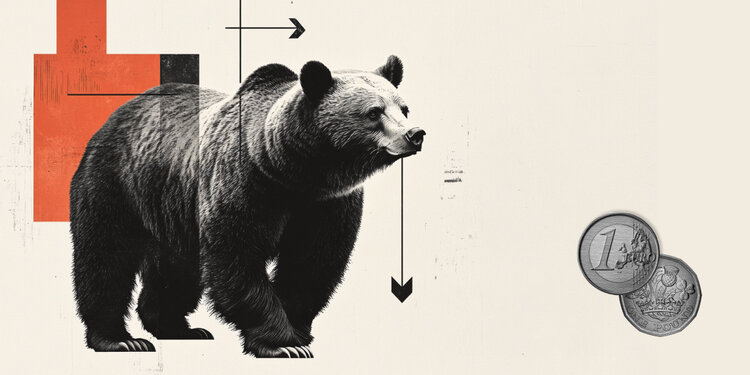- EUR/GBP softens to near 0.8700 in Wednesday’s early European session.
- The final HCOB Eurozone Composite PMI declined to 50.9 in July, weaker than expected.
- The BoE is set to cut rates at its August meeting on Thursday.
The EUR/GBP cross trades in negative territory around 0.8700 during the early European session on Wednesday. The Euro (EUR) edges lower against the Pound Sterling (GBP) due to weaker Eurozone Purchasing Managers Index (PMI) data. Traders await the Eurozone June Retail Sales data, which is due later on Wednesday.
Data released by the Federal Statistics Office on Wednesday showed that Germany’s Factory Orders unexpectedly declined in June, suggesting that the country’s manufacturing sector downturn extended. The downbeat economic data and sluggish economic growth in the Eurozone might prompt the European Central Bank (ECB) to remain cautious about delivering further rate cuts too quickly.
Furthermore, the final HCOB Eurozone Composite PMI for July declined to 50.9 from 51.0 in June. This reading came in below the market consensus of 51.0. The Eurozone Services PMI eased to 51.0 in July, versus 51.2 prior, weaker than the 51.2 expected.
The outcome of the European Union (EU) and the United States (US) trade talks remains uncertain. The EU announced Monday that it will suspend for six months its planned countermeasures against the US tariffs, which were set to take effect this week. Any signs of escalating trade tensions could drag the EUR lower against the GBP.
All eyes will be on the Bank of England (BoE) interest rate decision on Thursday. The BoE is expected to lower its base rate by 25 basis points (bps) to 4.00% at its August Monetary Policy Committee (MPC) meeting, which will be the third cut of 2025. Financial markets have priced in more than 80% odds of BoE rate cuts at the August meeting and are penciling in a further quarter-point reduction before the end of the year, according to Reuters.
Pound Sterling FAQs
The Pound Sterling (GBP) is the oldest currency in the world (886 AD) and the official currency of the United Kingdom. It is the fourth most traded unit for foreign exchange (FX) in the world, accounting for 12% of all transactions, averaging $630 billion a day, according to 2022 data.
Its key trading pairs are GBP/USD, also known as ‘Cable’, which accounts for 11% of FX, GBP/JPY, or the ‘Dragon’ as it is known by traders (3%), and EUR/GBP (2%). The Pound Sterling is issued by the Bank of England (BoE).
The single most important factor influencing the value of the Pound Sterling is monetary policy decided by the Bank of England. The BoE bases its decisions on whether it has achieved its primary goal of “price stability” – a steady inflation rate of around 2%. Its primary tool for achieving this is the adjustment of interest rates.
When inflation is too high, the BoE will try to rein it in by raising interest rates, making it more expensive for people and businesses to access credit. This is generally positive for GBP, as higher interest rates make the UK a more attractive place for global investors to park their money.
When inflation falls too low it is a sign economic growth is slowing. In this scenario, the BoE will consider lowering interest rates to cheapen credit so businesses will borrow more to invest in growth-generating projects.
Data releases gauge the health of the economy and can impact the value of the Pound Sterling. Indicators such as GDP, Manufacturing and Services PMIs, and employment can all influence the direction of the GBP.
A strong economy is good for Sterling. Not only does it attract more foreign investment but it may encourage the BoE to put up interest rates, which will directly strengthen GBP. Otherwise, if economic data is weak, the Pound Sterling is likely to fall.
Another significant data release for the Pound Sterling is the Trade Balance. This indicator measures the difference between what a country earns from its exports and what it spends on imports over a given period.
If a country produces highly sought-after exports, its currency will benefit purely from the extra demand created from foreign buyers seeking to purchase these goods. Therefore, a positive net Trade Balance strengthens a currency and vice versa for a negative balance.
Read the full article here


